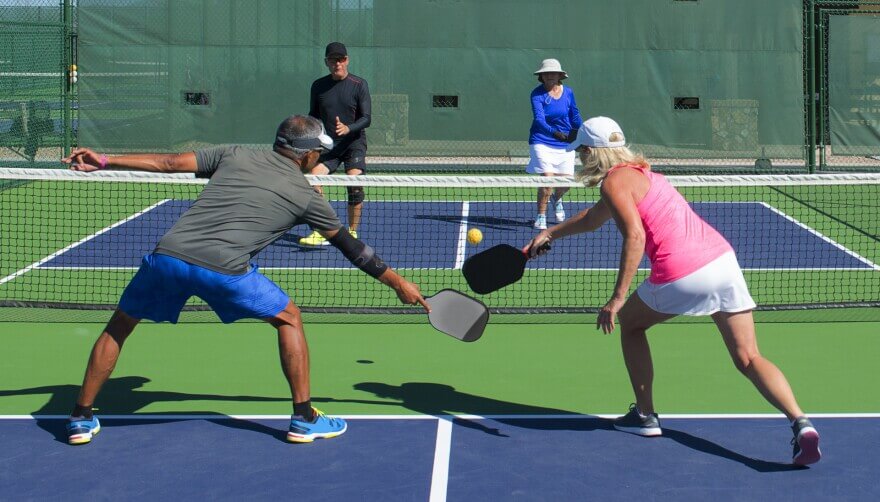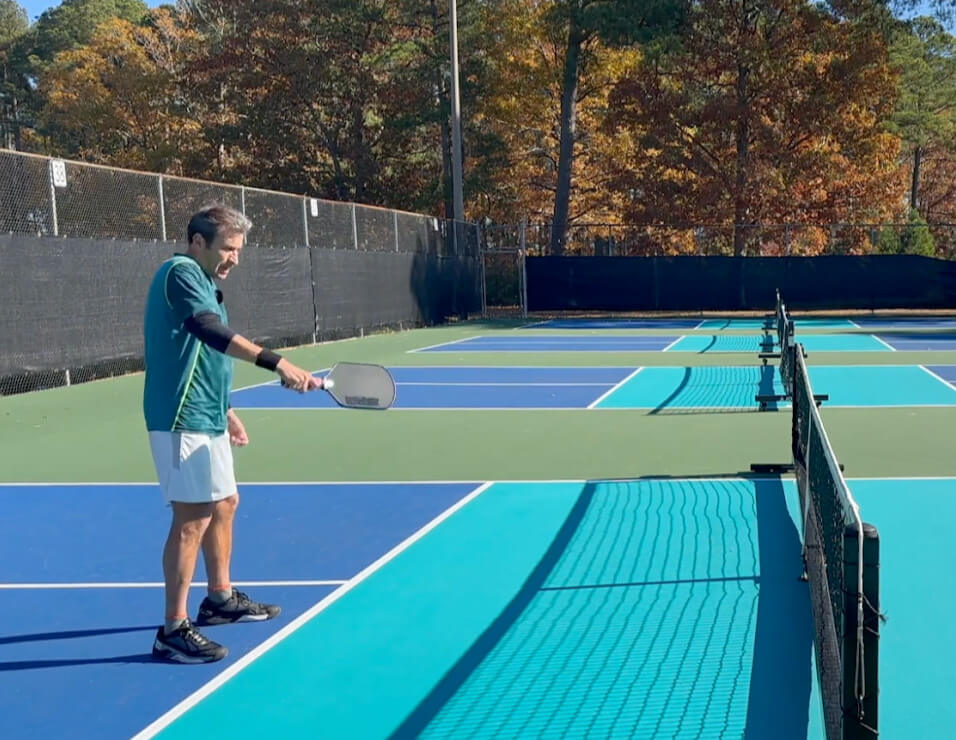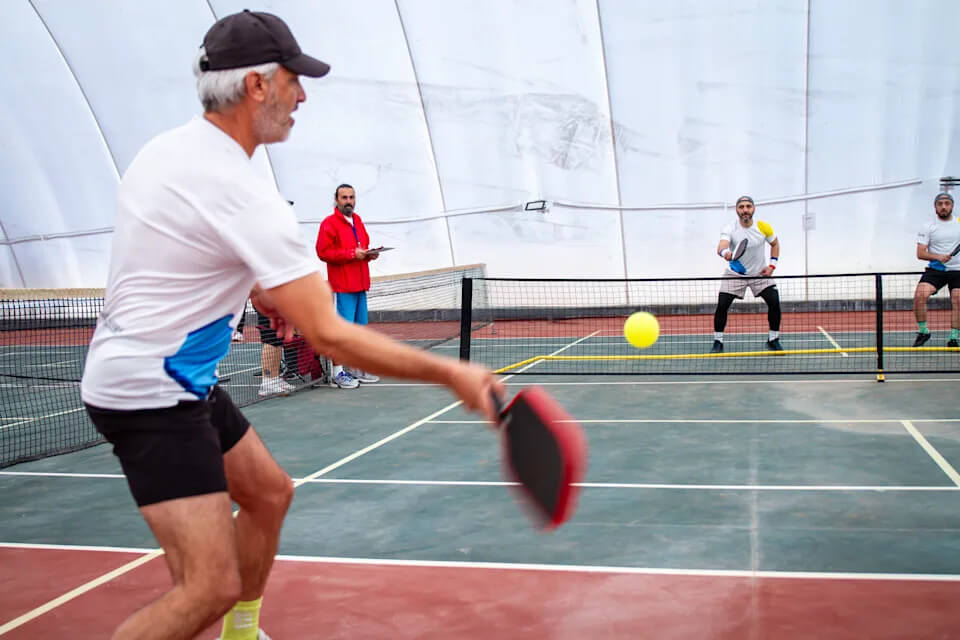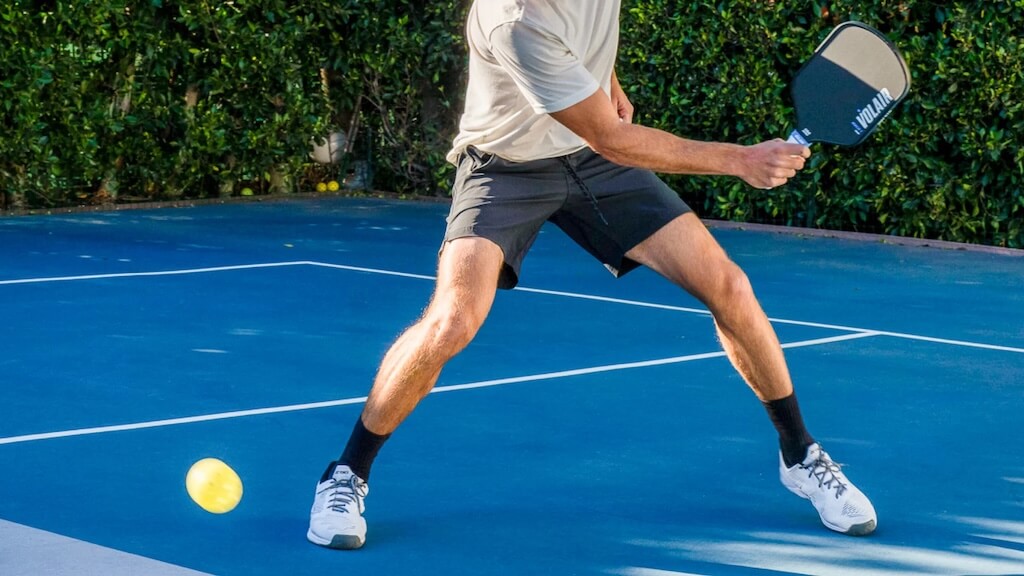Playing pickleball with a partner is the most common way to enjoy the sport, but if you want to seriously improve your skills, learning how to practice pickleball alone is essential. Solo practice is an invaluable tool for players of all levels. It allows you to focus on specific mechanics without the pressure of a live match, build muscle memory, and improve your consistency at your own pace. Whether you have access to a full court or just a wall and a few balls, this guide will provide you with the strategies and drills you need to master how to practice pickleball alone and transform your game. For a comprehensive look at all the official rules and origins of the sport, you can refer to our Complete Pickleball Play Guide: Origins and Official Rules.
The Essential Equipment for Solo Practice
Before you start, make sure you have the right gear. Mastering how to practice pickleball alone requires more than just your paddle. You can find everything you need to start your solo training right at home.
- A Pickleball Rebounder or a Wall: A solid, flat wall is your best training partner. A rebounder net is an excellent alternative, as it often provides a more realistic bounce.
- Plenty of Pickleballs: Chasing after a single ball wastes valuable practice time. Have a bucket or hopper full of balls so you can hit continuous repetitions.
- Tape or Markers: Use painter’s tape or cones to create targets on your wall or the court to work on your shot placement and accuracy. The proper gear makes all the difference in how to practice pickleball alone.

Wall Drills: The Cornerstone of Solo Practice
The wall is a perfect tool for anyone who wants to learn how to practice pickleball alone. The consistent and immediate feedback is unmatched, helping you build a feel for the ball and your paddle. It’s the most straightforward way to learn how to practice pickleball alone.
Dinking Against the Wall
Dinking is the art of the soft game, and it’s a skill you can easily develop alone. Stand about 5-7 feet from a wall, or near the kitchen line on a court. Drop the ball in front of you and gently dink it against the wall, trying to keep the rally going. The goal is to get a smooth, controlled rhythm. You can vary this drill by practicing how to practice pickleball alone with forehand dinks only, backhand dinks only, or alternating between the two. This drill is crucial for developing soft hands and touch.
Volleys for Fast Hands
This is an excellent drill for improving your reflexes and hand speed at the net. Stand just 3-4 feet from the wall. Drop the ball and hit it before it bounces, volleying it back and forth against the wall as many times as you can. This rapid-fire drill forces you to keep your paddle in a ready position and react quickly. To practice how to practice pickleball alone and truly hone your skills, try alternating between forehand and backhand volleys. As you get better, increase the pace to simulate a fast-paced rally. This is another key aspect of how to practice pickleball alone.

Groundstrokes and Power Drills
To work on your forehand and backhand groundstrokes, stand about 15-20 feet away from the wall. Hit the ball with a full, controlled swing. Focus on your form, your contact point, and your follow-through. Practice both forehands and backhands, aiming for consistency over power. You can also use targets to practice how to practice pickleball alone with specific shot placement. Try hitting the ball to different areas on the wall to simulate hitting shots down the line or cross-court.
Court Drills Without a Wall
Even on a pickleball court without a partner, you can still perform highly effective drills. This type of practice focuses on movement, shot execution, and targeting.
Serve and Return Consistency
Practice your serves by placing a target, such as a cone or a paddle bag, in the correct service box. Drop a bucket of balls and practice serving with your full routine. This is a great way to build confidence and consistency. You can practice how to practice pickleball alone by serving from the right and left sides of the court to work on both angles. Similarly, practice returns by standing at the non-volley zone and hitting returns from a drop-fed ball.
Static Drop-Fed Drills
This is an easy way to practice specific shots without a rebounder. Simply stand at the baseline or the non-volley zone line, drop the ball in front of you, and hit your shot. Practice third-shot drops, drives, and lobs. Focusing on a single shot repeatedly is a powerful way to ingrain muscle memory. This is the simplest way to understand how to practice pickleball alone.

Improving Your Footwork and Movement
Footwork is arguably the most important skill in pickleball. Luckily, it’s also something you can practice without a partner.
- The Ready Stance: Stand in a ready position at the kitchen line. Practice your split step—a small hop you take as your imaginary opponent is about to hit the ball—to ensure you’re always ready to react.
- Shadowing Drills: Visualize a point and go through all the movements. Practice your shuffles at the kitchen line, your transitions from the baseline to the net, and your lateral movements. This is a quiet, low-impact way to practice how to practice pickleball alone while building endurance.
A Sample Solo Practice Routine
Here is an example of a 30-minute workout that shows you how to practice pickleball alone in a structured way:
- Warm-up (5 minutes): * Start with dinks against the wall to get a feel for the ball and your paddle.
- Transition to slow, consistent groundstrokes.
- Drill #1: Fast Hands (5 minutes): * Practice volleying against the wall. Start slow, then increase the speed.
- Drill #2: Serve & Return (5 minutes): * Practice serves to a target in the service box.
- Practice returns from a dropped ball.
- Drill #3: Dinking & Drops (10 minutes): * Spend a few minutes on static drop-fed third-shot drops, aiming for accuracy.
- Then, practice continuous dinks against the wall.
- Cool Down (5 minutes): * Finish with light stretches and a few rounds of ghosting drills to work on court movement.

Final Tips for Solo Practice
Knowing how to practice pickleball alone is one thing; making it effective is another. Always practice with a purpose. Focus on one skill per session, and if possible, use a camera to record yourself. Watching your form and footwork provides valuable feedback that a wall can’t. By consistently dedicating time to solo drills, you will see a noticeable improvement in your game that will surprise both you and your opponents. When you understand how to practice pickleball alone, you unlock a new level of skill development. The more you learn how to practice pickleball alone, the faster you’ll improve. Practicing how to practice pickleball alone is the secret to getting an edge. The best part of learning how to practice pickleball alone is you get to go at your own pace.

